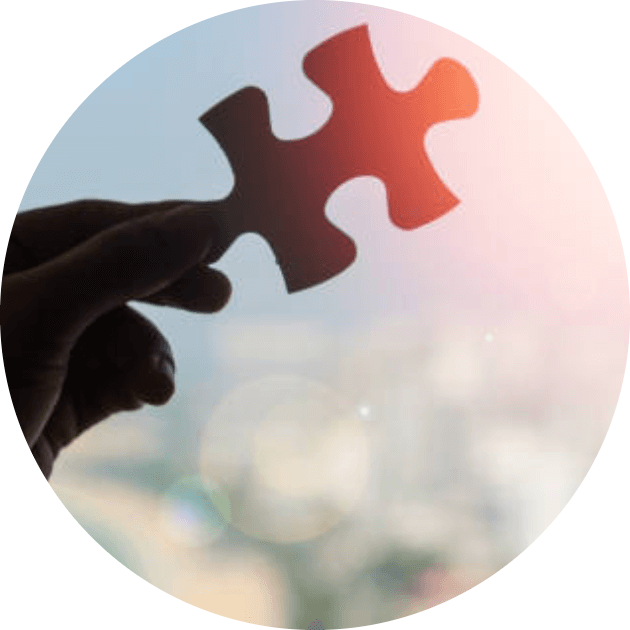
As parents, we are very shocked when it turns out that our child is not developing properly and finally receives the diagnosis. We as a parent would try everything that shows promise, just to help our child. Why we? We are trying to find a possible cause of autism, but this medical problem is very complex and difficult to find the exact cause, but there are a few possibilities to start
AUTISM is a very complicated condition that can have many causes, and precisely because it can cause autistic symptoms, it is terribly difficult to find a solution to it. Because what works for one child is not the cause of their symptoms for another, only the symptoms are similar.
What are the possible causes of autism
The exact cause of autism is not fully understood, and it is likely that there are multiple factors that contribute to the development of the disorder. Research has shown that both genetic and environmental factors may play a role in the development of autism.
Genetic factors:
Many studies have found that people with autism are more likely to have certain genetic variations or mutations. These genetic changes may be inherited from a person’s parents or may occur spontaneously during fetal development. It is thought that the combination of multiple genetic changes may contribute to the development of autism.
Environmental factors:
Research has also identified a number of environmental factors that may increase the risk of developing autism. These include prenatal exposure to certain medications, infections, and toxins; premature birth; and certain medical conditions that occur during pregnancy or childbirth. However, it is important to note that most people with these risk factors do not develop autism, and that the majority of cases of autism do not have a known cause.
Autism can be an associated medical state of certain genetic diseases which can be a more severe genetic disease or “just” a genetically determined methylation problem.
There are so-called biomedical theories regarding the causes of autism. Examples include:
Exposure to toxic chemicals
In our modern society, we are exposed to many hazardous chemicals. Air and water are becoming increasingly polluted, heavy metals can get into our bodies from toys, food and, water, etc., we come into contact with toxic chemicals every day, which are added to household accessories and furniture, but they are also found in pesticides and food.
We know that metals like lead and mercury can damage brain tissue. We know that various body organs can be damaged by chemicals, causing metabolic and hormonal imbalances. In fact, the immune system can also be affected by these heavy metals, leaving the body more open to various degenerative states. It is possible that these exposures add up, and some babies simply cannot handle this load, which begins already in the womb and continues throughout childhood.
In 2004, an Environmental Working Group examined the umbilical cord blood of ten randomly selected mothers and found a staggering amount of chemicals and pollutants. Tests revealed 287 different toxic chemicals, including mercury, pesticides, and other chemicals (Source: https://www.ewg.org/research/body-burden-pollution-newborns)
Most of the chemicals found are known to cause cancer, mutations, and birth defects. The study showed that the question is not whether unborn babies are exposed to toxins but how exposed they are to poisons and how they are affected by such amounts of poison.
The developing nervous system of the infant (which usually happens from conception to the age of three) is particularly susceptible to damage caused by such exposures. When a brain cell is damaged, so are the dozens of nerve pathways that connect the cells. If, for example, the area of the brain that regulates language development is damaged by thousands of nerve cells, then the child’s speech development and comprehension will be delayed, or his speech will simply be incomprehensible. Depending on the rate of injury.
Many environmental toxic substances – including mercury, lead, arsenic, and toluene – cause neurodevelopmental disorders such as autism, cerebral palsy, ADHD, and mental retardation. This may be due to the fact that the developing brain is more sensitive to injuries caused by toxic substances than the adult brain. https://www.psychiatrictimes.com/view/environmental-toxicants-and-autism-spectrum-disorder
Autism is a multifactorial neurodevelopmental disorder caused by genetic and environmental factors. https://www.ncbi.nlm.nih.gov/pmc/articles/PMC5377970/
According to the latest evidence, up to 40-50% of autism spectrum disorder (ASD) can be determined by environmental factors. https://www.ncbi.nlm.nih.gov/pmc/articles/PMC5356236/
Although the role of genetic disorders in autism spectrum disorder (ASD) is accepted as a fact, recent studies point to an equal contribution of environmental factors, especially environmental toxic substances. https://www.ncbi.nlm.nih.gov/pmc/articles/PMC3944636/
It is not yet possible to know exactly what environmental toxins contribute to autism. Prevention is of paramount importance since the elimination of toxins is a very difficult task. It is very important to limit the exposure of the expectant mother and baby.
It is worth learning how best to remove those chemicals from the vicinity of our children. Download the most common toxin deposits here
However, the theory of chemical exposure does not answer the question of why autism occurs in some children but not in others. This is just the only element of the puzzle. The answer to this should be sought in the child’s genetics, his methylation state! There we find the answer to the question of why environmental toxins can cause neurological symptoms in one child and not in another. This can help us understand why autism is a spectrum in which children show different symptoms and are affected with varying degrees of severity.
Studies have shown that children with autism have significantly higher heavy metal loads. Likely, detoxification processes and cell regeneration do not work properly in children with autism, and this can be caused by methylation disorder.
You can find articles on methylation here: Methylation and Autism
List of other probabile cause of Autism
If you want to read more about the possible causes, just click the name of the causes below:
-
Genetic problems
-
Differences in brain structure in autism
-
Prenatal and birth factors
-
Theory based on disorders of mitochondria
-
Methylation disorders
Resources
- m B-R, SeoH-S, Ku J-M, et al. Silibinininhibits the production of pro-inflammatory cytokines through inhibition of NF-κB signaling pathway in HMC-1 human mast-cells. Inflammation. Research. 2013;62(11):941-950. doi:10.1007/s00011-013-0640-1.
- ChapowalA. PetasitesStudy Group. Randomisedcontrolled trial of butterbur and cetirizine for treating seasonal allergic rhinitis. BMJ 2002;324:144-6.
- Hayes, N. A. and Foreman, J. C. The activity of compounds extracted from feverfew on histamine release from rat mast-cells. J Pharm Pharmacol1987;39(6):466-470
- Hsieh et al. Baicalein inhibits IL-1ß- and TNF-a-induced inflammatory cytokine production from human mast-cells via regulation of the NF-?B pathway. ClinMolAllergy. 5: 5. 2007.
- TheoharidesTC, Patra P, Boucher W, et al. Chondroitin sulphateinhibits connective tissue mast-cells. British Journal of Pharmacology. 2000;131(6):1039-1049. doi:10.1038/ sj.bjp.0703672.
- Ro JY, Lee BC, Kim JY, et al. Inhibitory mechanism of aloe single component (alprogen) on mediator release in guinea pig lung mast-cells activated with specific antigenantibodyreactions. J PharmacolExpTher. 2000;292:114–121. 73.
- https://www.ncbi.nlm.nih.gov/pubmed/24477254
- https://www.ncbi.nlm.nih.gov/pubmed/28458279
- https://www.ncbi.nlm.nih.gov/pubmed/9421440
- https://www.ncbi.nlm.nih.gov/pubmed/10344773
- https://www.ncbi.nlm.nih.gov/pmc/articles/PMC4315779/


